24 Punctuation: Semicolons and Colons
Semicolons
A semicolon is a mark to signal a partial separation of things. Unlike a period, which signals a “stop”, a semicolon says “yield” or flow into the next thought.
Semicolons have two uses:
1. To replace a period between two closely related sentences.
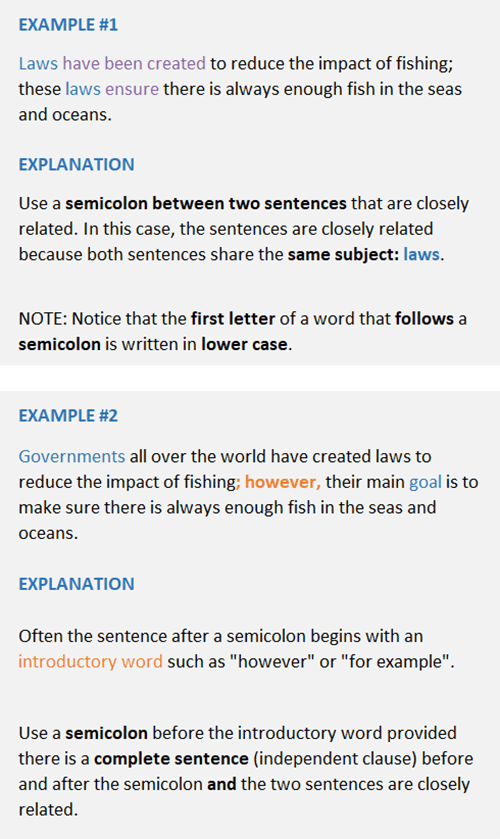
2. To separate items in a list when commas are already used.
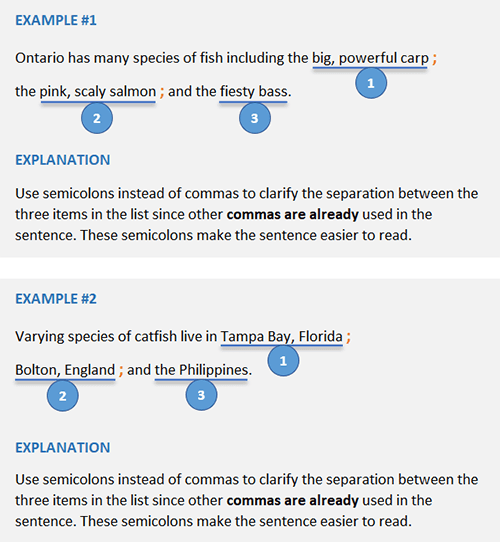
Tip: Do not use a semicolon between two sentences that are not closely related. Use a period instead.
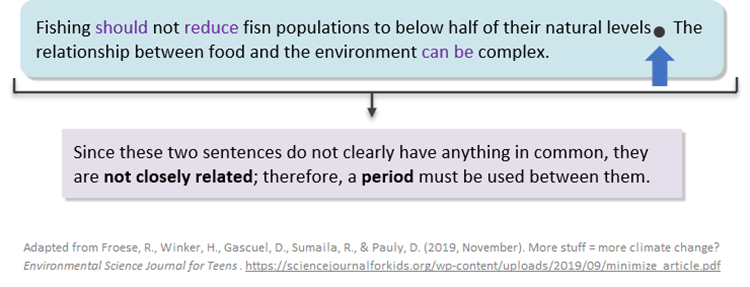
Learning Check
Determine if semicolons are used properly in the following sentences.
Once you have finished the Learning Check Quiz, read about how to use colons.
Colons
The colon is a mark of introduction that indicates an explanation will follow. A colon can only be used after an independent clause (complete sentence). The information provided after a colon can be used to introduce different types of information.
1. Introduce a list
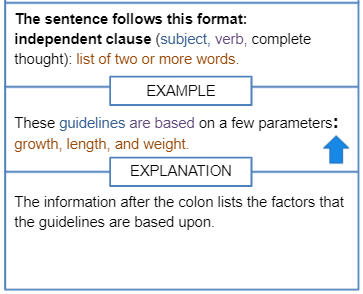
2. Introduce a term
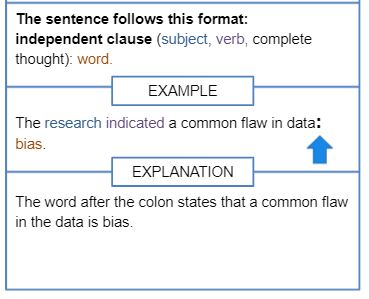
3. Introduce a clause

4. Introduce a phrase
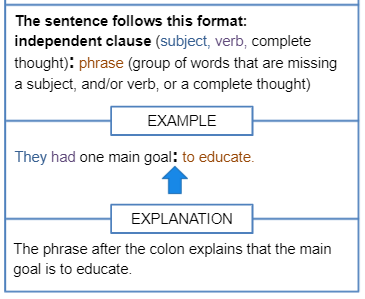
Tip: Do not use a colon if an independent clause does not appear before the list, word, phrase, or another independent clause.
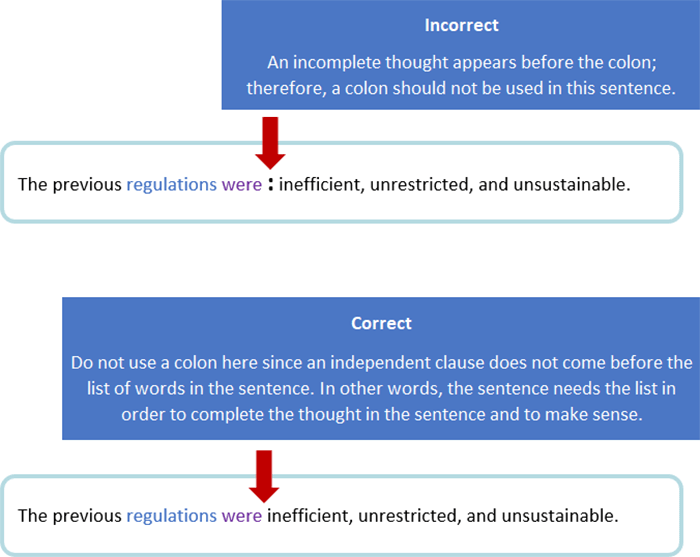
Learning Check
Determine if colons are used properly in the following sentences.
Semicolons and Colons Review
Watch this video to review what you’ve learned about commas, semi-colons, and colons:[1]
Additional Resources
To learn more about semi-colons
- Read Chapter 3.2 of Writing for Success [2].
- Try this online activity from OWL Purdue; complete the exercise and then compare your responses with the answer key
To learn more about colons
- Read Chapter 3.3 of Writing for Success [3].
To review commas, semi-colons, and colons
- Try this online activity from OWL Purdue; complete the exercise and then compare your responses with the answer key
- Shannon, D. (2021, March 28). Commas and semicolons [Video]. YouTube. https://youtu.be/N9wWrBIBbnk ↵
- Writing for Success is adapted from a work produced and distributed under a Creative Commons license (CC BY-NC-SA) in 2011 by a publisher who has requested that they and the original author not receive attribution. This adapted edition is produced by the University of Minnesota Libraries Publishing through the eLearning Support Initiative. ↵
- Writing for Success is adapted from a work produced and distributed under a Creative Commons license (CC BY-NC-SA) in 2011 by a publisher who has requested that they and the original author not receive attribution. This adapted edition is produced by the University of Minnesota Libraries Publishing through the eLearning Support Initiative. ↵

